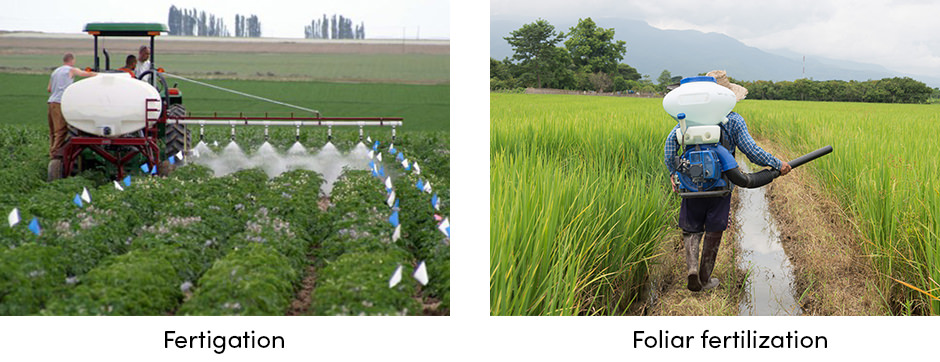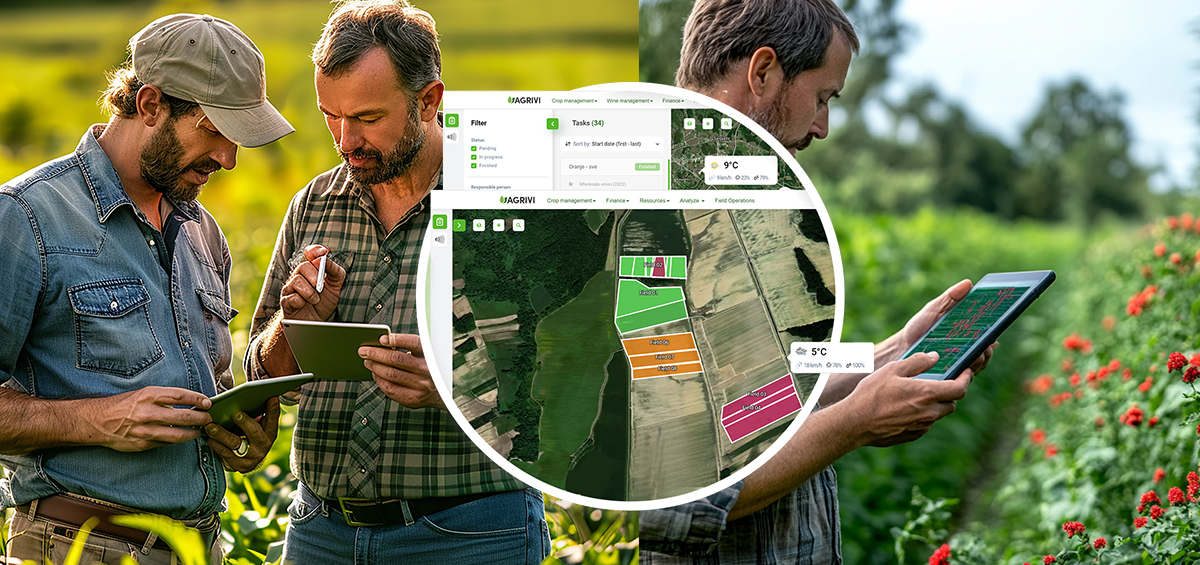Nutrients play an important role in crop growth and development. Therefore, it’s extremely important to ensure that well-balanced and quality nutrients are provided throughout the entire crop life-cycle. The secret to good nutrient management is to ensure that crops are receiving the right quantity of nutrients exactly when they need them most. In this regard, here are three different types of fertilizing, each done according to the time of application:
- Basic fertilization
- Pre-sowing fertilization
- Supplementary fertilization (top-dressing fertilization).
Basic fertilization and pre-sowing fertilization supply the crops with nutrients before the beginning of a crop life-cycle.
On the other hand, supplementary fertilization, also called top-dressing fertilization, is a farm practice that mainly refers to managing the amounts of nitrogen periodically during the sensitive crop development stages. By supporting the most sensitive crop development stages, supplementary fertilization positively affects the yields and quality of crops.
How to Manage Nitrogen With Supplementary Fertilization?
Since crops use small amounts of nitrogen during the initial weeks following germination or transplanting, those life stages require small amounts of nitrogen application. As the crop continues to grow, it requires higher amounts of nitrogen.
The lack of nitrogen during susceptible growth stages may cause stunted growth and chlorosis on the leaves. For this reason it’s particularly important to ensure that proper quantities of nitrogen are applied.
While a deficiency of nitrogen may harm the crops, excessive amounts of nitrogen make it subject to leaching. In other words, it’s undesirable to have high amounts of nitrogen when crop demands are low.
For this reason, supplementary fertilization is an essential farm practice needed for balancing the optimal amounts of nitrogen according to the crop’s needs.
Top-dressing fertilization can be managed differently based on the type of applied fertilizers. For instance, when applying solid nitrogen fertilizers can be applied by:
- Broadcasting; application of fertilizers equally throughout the entire field
- Banding; application of fertilizers in rows.
On the other hand, liquid nitrogen can be applied by:
- Fertigation; application of fertilizers through the irrigation system
- Spraying (foliar fertilization); spraying directly on the leaves.
Feed Your Crops and They Will Feed You
Proper nutrient management is a vital precondition that is needed in order to grow healthy crops that will result in higher yields. Therefore, top-dressing fertilization is an essential practice that will support the crop’s need for nutrients at exactly the right time. When this practice is based on the results of soil analysis, top-dressing fertilization leads to remarkable results.
Text sources: UMass
Image sources: Agricultural Review







